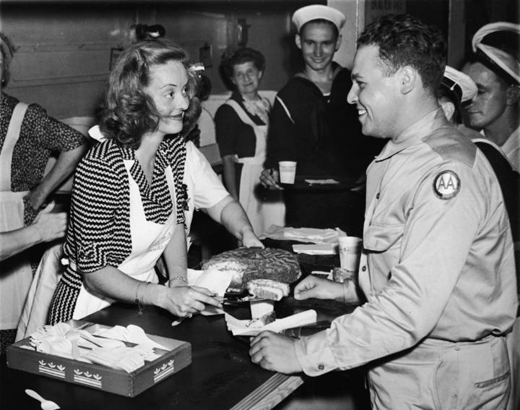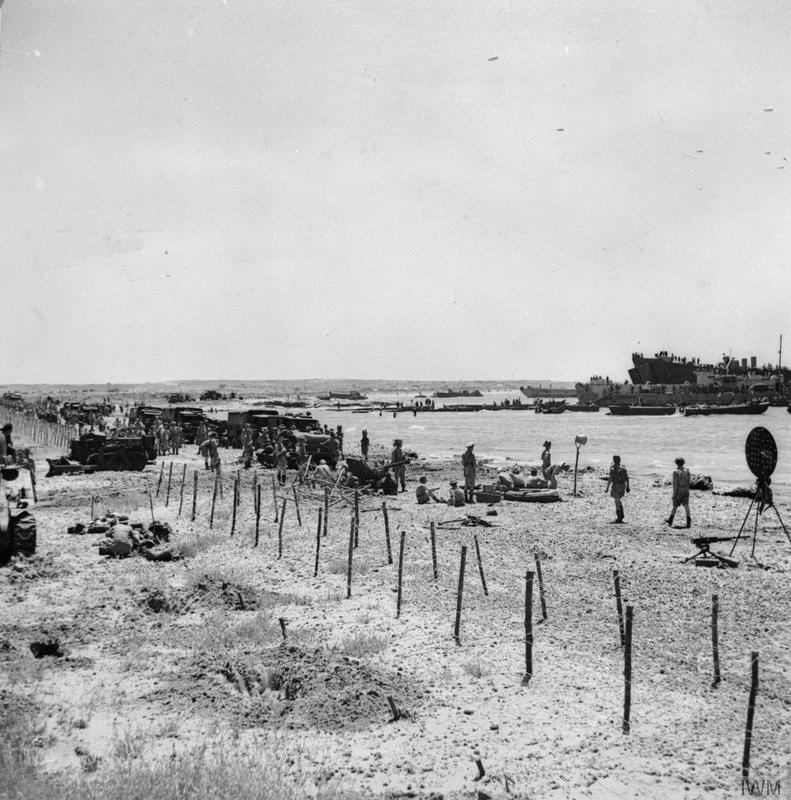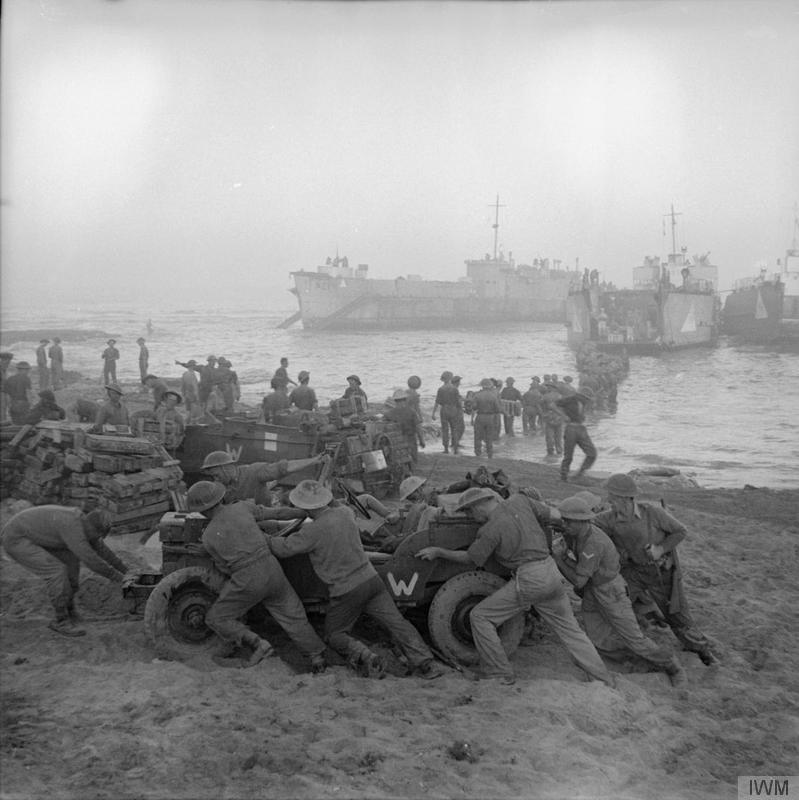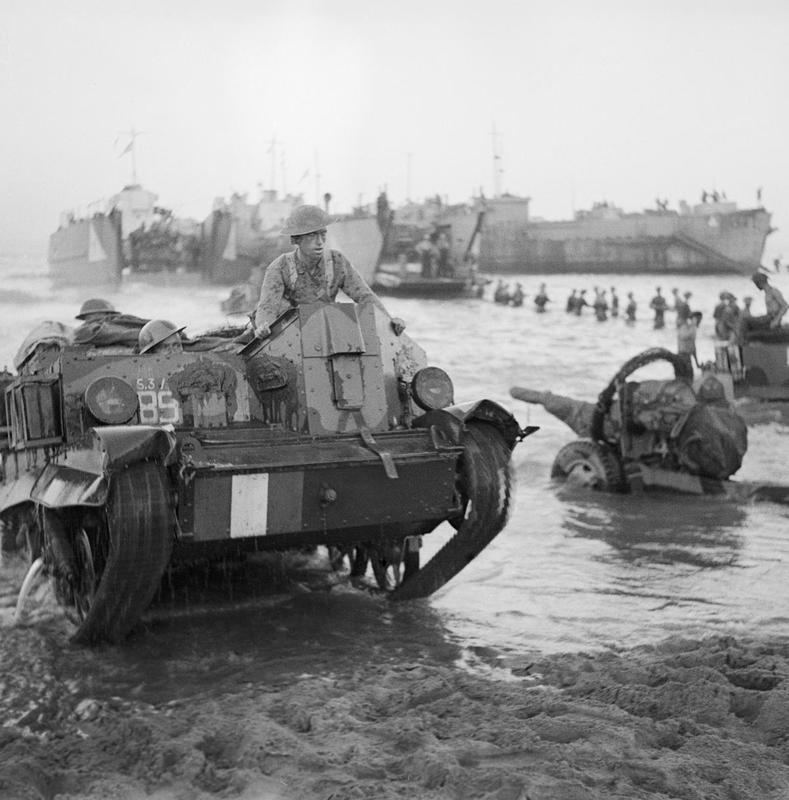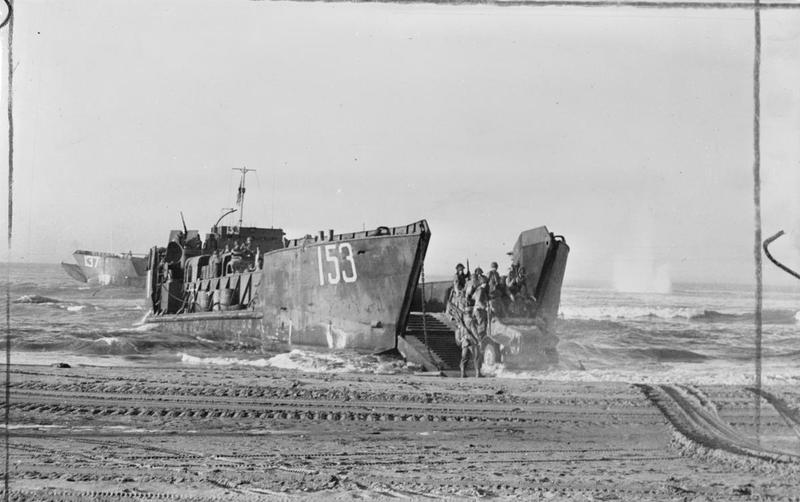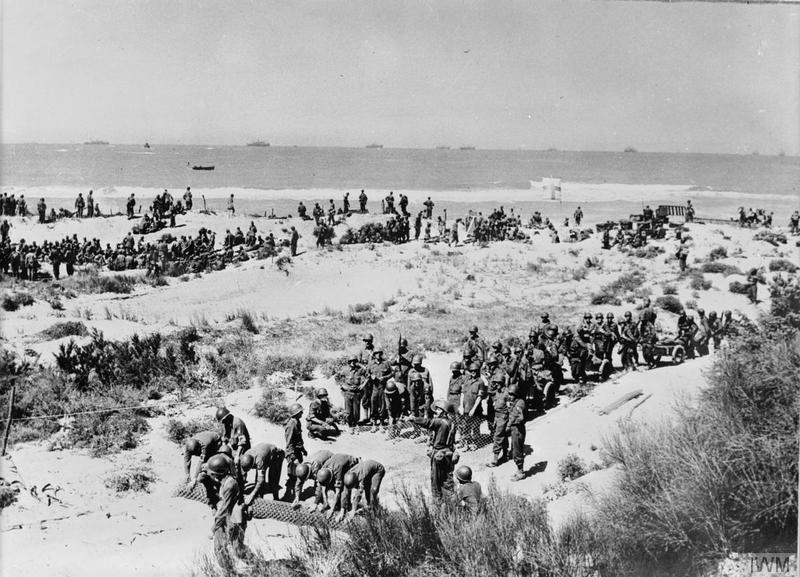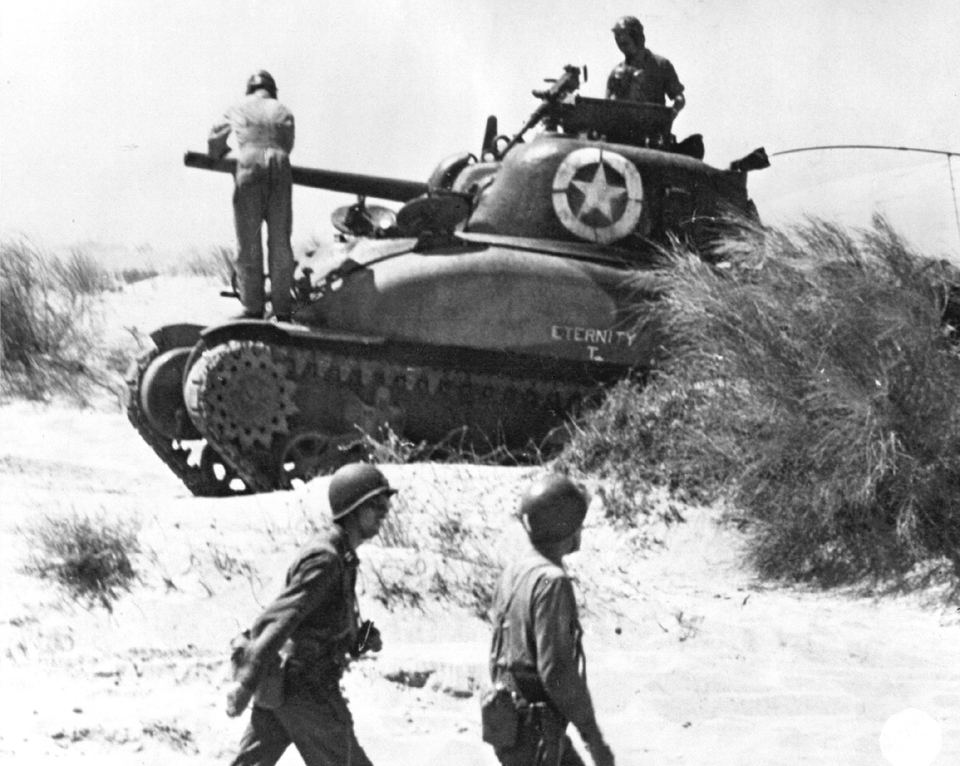Air Operations, Aleutians 6 28th Composite Bomb Group B-24s and 5 B-25s attack a convoy near Attu.
[  | |   ] ]
Air Operations, East Indies 380th Heavy Bomb Group B-24s attack Boela in the Molucca Islands.
[  | |   ] ]
Air Operations, CBI
FRENCH INDOCHINA
- 9 308th Heavy Bomb Group B-24s attack the port area at Haiphong.
[  | |   ] ]
Air Operations, Japan 8 28th Composite Bomb Group B-25s operating from the airfield on Attu attack Paramushiro Island in the northern Kurile Islands. Technically, this is the first attack by Allied land-based bombers against mainland Japan.
Air Operations, New Guinea - V Bomber Command B-25s attack Logui and Salamaua and support a link-up between the Nassau Bay invasion force and large Australian Army forces.
- B-24s attack Babo and 1 B-24 attacks Kela.
[  | |   ] ]
Air Operations, Sicily - In history's first mass airborne assault, which begins at 0245 hours, 133 tow planes, including 105 51st Troop Carrier Wing C-47s, release glider-borne British Army airborne troops near Syracuse. Of the 133 gliders released, only 12 come down in the landing zone and 47 are lost at sea, most with all the troops aboard. The remaining 74 come to rest pretty much all over the island.
- A concurrent parachute drop by American paratroopers against Gela meets pretty much the same difficulties. A total of 226 52nd Troop Carrier Wing C-47s drop 2,781 paratroopers and 891 parachute equipment packs, but barely enough of both to secure th vital Gela crossroads actually hit the drop zone.
- Throughout the day, NAAf and 9th Air Force bombers, fighters, and fighter-bombers undertake a variety of missions in support of the Allied invasion forces.
- Throughout the day, only 24 Axis aircraft are downed by NAAF fighters. In the day's biggest air action, which takes place over southewestern Sicily between 1800 and 1820 hours, P-38s of the 82nd Fighter Group's 96th Fighter Squadron down 9 Axis fighters and 1 Ju-88.
- During the night, NASAF aircraft attack the Sciacca and Trapani/Milo Airdromes.
[  | |   ] ]
Air Operations, Solomons US Marine Corps TBFs drop supplies to US Marine ground forces near Enogai, New Georgia.
[  | |   ] ]
Eastern Front In the north Model's attacks finally grind to a halt in the Battle of Kursk. In the south the unrelenting German pressure has seriously worried Vatutin and help is sent from Konev's Steppe Front principally the 5th Guards Tank Army.
CENTRAL SECTOR
German success at Kursk now hinges on the 4th Panzer Army. The Totenkopf crosses the Psel and captures the northern slopes of Hill 226.6. The Leibstandarte advances up the Prokhorovka road and captures the Komsomolets State Farm and becomes engaged in vicious fighting for Hill 241.6. The hill is taken shortly after nightfall. After a gruelling battle of attrition, Das Reich gains only a foothold in the small village of Ivanovskii Vyselok. the II SS Panzer Corps has made slow progress, but enough for Hitler to order that Operation CITADEL be continued. On the Soviet side, the 5th Guards Army arrives at Prokhorovka during the night and the 5th Guards Tank Army moves into assembly areas in the 5th Guards Army's rear.
Russians Ready for Action
|
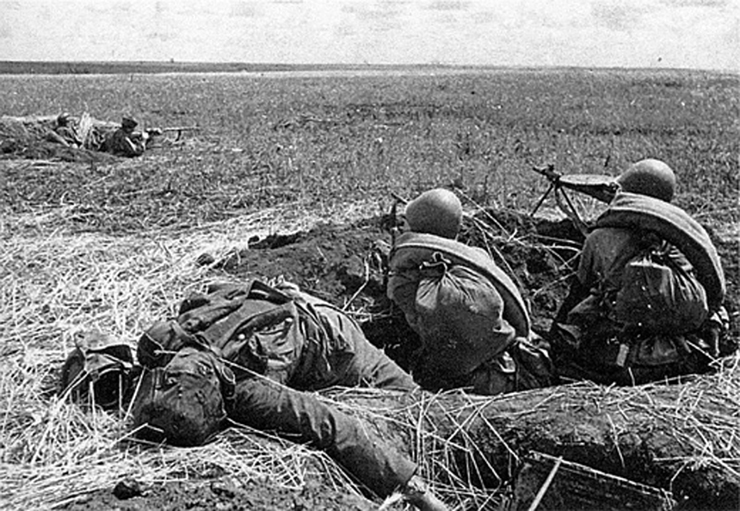 |
|
German Tiger I Takes Out a Soviet T-34
|
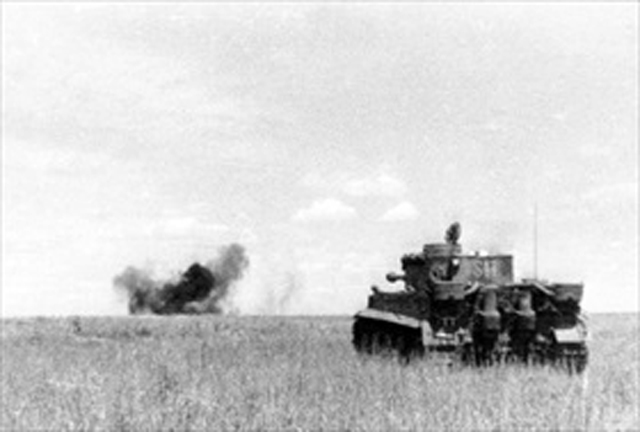 |
|
Hitler rejects his generals' advice and decides to persevere with the Kursk offensive.[MORE]
[  | |   ] ]
Indian Ocean The US freighter Alice E. Palmer (7176t), bound for Durban, is torpedoed by U-177 and abandoned by the 43 crewmen and 25-man Armed Guard. The ship is sunk by the U-boat shelling her.
[  | |   ] ]
Mediterranean U-371 attacks a convoy of the Algerian coast, torpedoing the US freighter Matthew Maury (7176t) and the tanker Gulfprince (6561t). There are no casualties aboard the Matthew Maury and she is towed to Bougie, Algeria. She eventually returns to service. The Gulfprince is abandoned with the loss of 1 Armed Guard sailor. Her survivors are rescued by the British trawler Sir Gareth and the freighter Empire Commerce. She is towed to Algiers and later used as a mobile storage facility by the US Navy.
[  | |   ] ]
New Georgia Enogai village is captured by marine raiders but is exhausted by the effort and receives resupply by air. The Japanese coastal artillery battery at Enogai is also captured, allowing US warships free access to Kula Gulf. The 3,300-foot-long Segi Point fighter airstrip is completed.
The momentum of the 43rd Division's westward drive on Munda slows, particularly on the right, where the 169th Infanty is brought to a halt at the junction of Munda Trail with a trail leading to the coast at Laiana. The jungle terrain makes close air support increasingly difficult as the attack progresses and is also slowing road construction.
[  | |   ] ]
New Guinea The Australians and Americans manage to link up at Buigap Creek, cutting the Japanese communications between Mubo and Salamaua.
[  | |   ] ]
Sicily The main Allied landings for Operation HUSKY begin. 160,000 men with 600 tanks set foot on the southeast coast of Sicily. Patton's 7th Army lands in the Gulf of Gela between Licata and Scoglitti. They meet only slight opposition and quickly take Gela, Licata and Vittoria. After taking Gela about 8:00a.m. Americans of the 1st Div and the Rangers encounter powerful counterattacks by the German Hermann Goering and Italian Livorno Divisions. Naval support for the landings come from 6 battleships, 2 carriers, 18 cruisers, 7 submarines and 210 other warships.
In the south where the American 45th Div is in action, Vittoria and Santa Croce Camerina are taken. To the north the US 3rd Div, 2nd Armored Div and Rangers take Licata, including the harbor and airfield, and consolidate their positions, keeping an eye on the movements of the German 15th Pzr Div, whom they have identified between Canicatti and Caltanissetta, and who are reported by American reconnaissance to be moving east.
The British landings between Syracuse and the southwest tip of the island are unopposed and Syracuse is taken by the end of the day. The landings are carried out without much difficulty, thanks to the accurate and intense fire of the warships, and because the defending forces did not expect a landing in such bad weather. 200 landing craft are put out of action because of the rough seas. During the operation British and American fighters from bases in Malta and Pantelleria fly in formation over the landing places to deal with any possible Axis counterattacks.
The bad weather has helped put the Italian coastal divs off their guard and the Allied bombardment has helped complete their demoralization. New equipment has also been used, including LST's and LCT's which enable the armor to be put ashore with the assaulting infantry.
US naval casualties in the landings include the destroyer Maddox (DD-622) sunk by a dive bomber, LST 313 sunk by a horizontal bomber and the minesweeper Sentinel (AM-113) sunk by a dive bomber. Damaged in collisions during the landing operation are destroyers Roe (DD-418) and Swanson (DD-443); attack transport William P. Biddle (APA-8) and the LST 382; and the LST 345 and the submarine chaser PC-611.
Maj-Gen G.G. Simonds
|
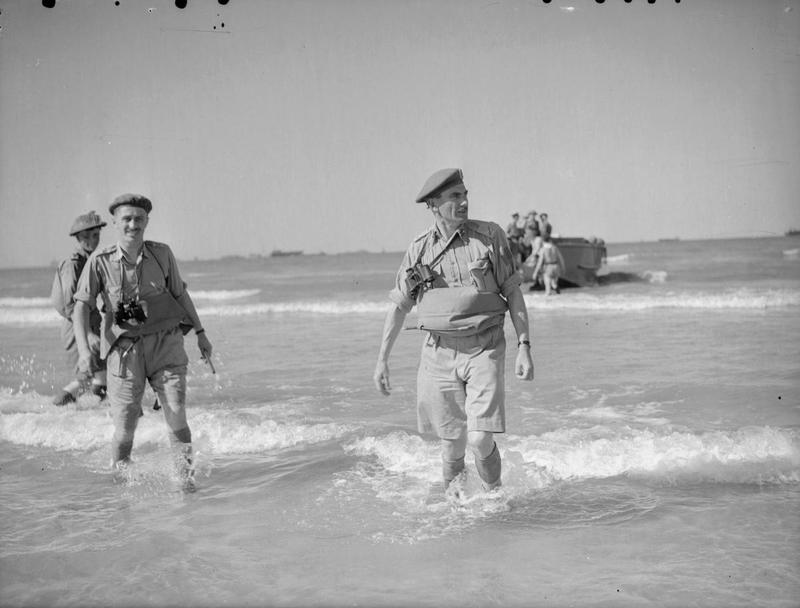 |
|
Tractor Rescues an Armored Vehicle
|
 |
|
Instructions Signalled by Semaphore
|
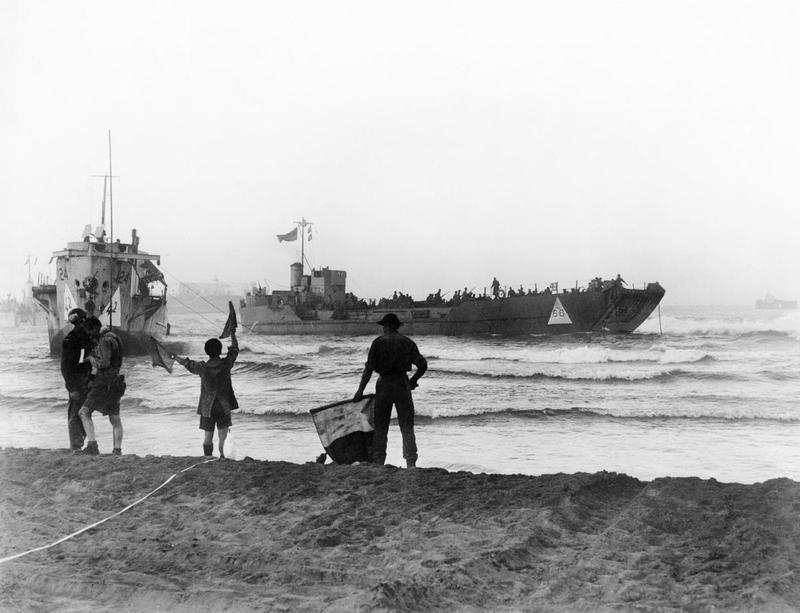 |
|
Troops Drying Their Clothes
|
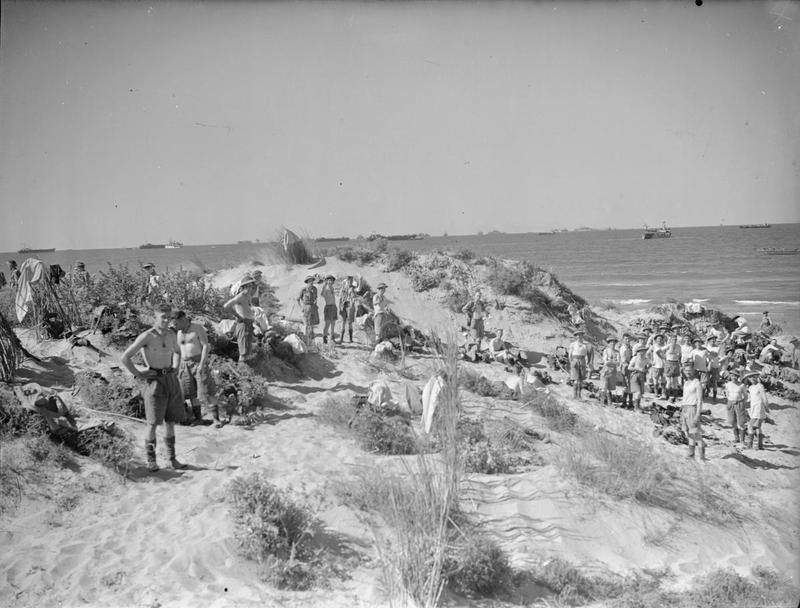 |
|
Ambulance Parties Resting
|
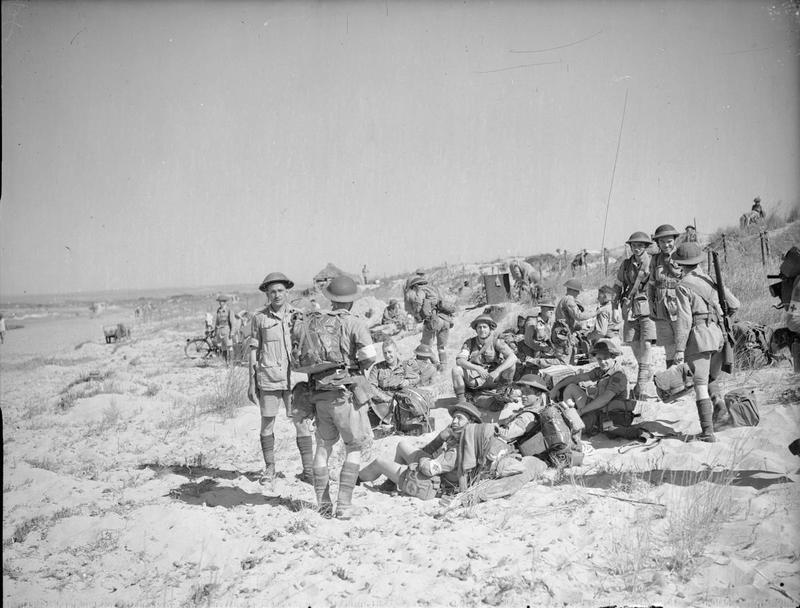 |
|
British Wounded Being Treated
|
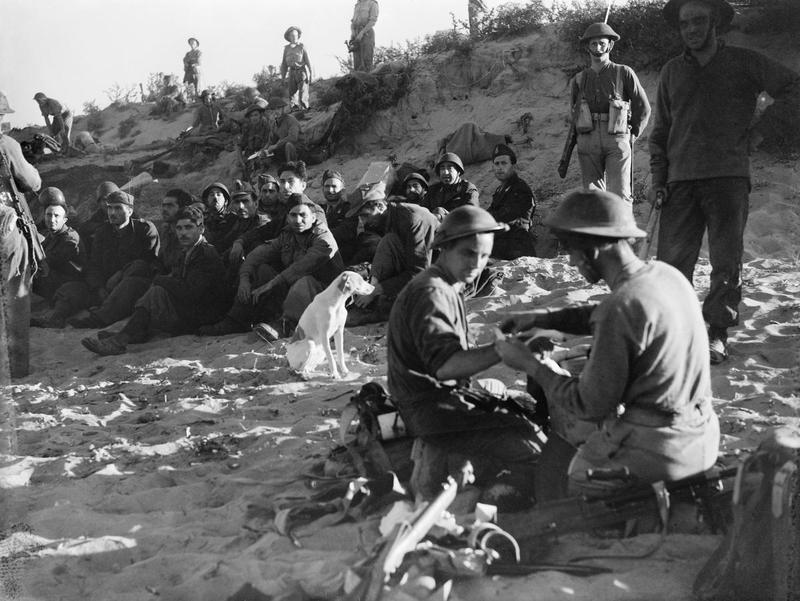 |
|
|
